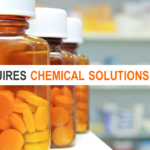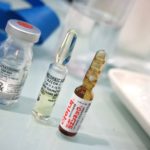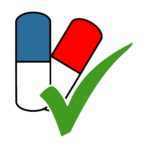SGS is now officially part of SGS North America! We’ll now be known as SGS (SGS), and you’ll continue to receive the same level of service – and more – that you’ve come to trust and expect from CSL over the years. On May 3, 2019, SGS… Read More >
Product testing and compliance have both been a recent topic in the news, particularly in regards to the safety of consumer products in both the pharmaceutical and dietary supplement industries. It has brought to light a question to many consumers: Are these companies even testing what they produce? In reality, companies in these industries have… Read More >
After being in business for over 21 years, we see thousands of samples come through our doors. One of the more interesting (and delicious) type of sample is the candy our clients send us to test. We’ve seen everything from fruit-flavored gummies to chocolate to peppermints- and all for good reason. Candy Concern In 1994,… Read More >
In response to the most recent revision for USP <1660> Evaluation of the Inner Surface Durability of Glass Containers, SGS has taken the lead in optimizing, validating and supporting the newest recommendations of applying the ICP impurities testing portion of the standard to meet current guidelines. What’s the big deal? The… Read More >
The updated Proposition 65 requirements have been one of the most-discussed topics in the natural products industry in 2018. Since you’ve heard about them so much, you probably have them memorized. You know that businesses are required to provide “clear and reasonable” warnings on products that expose consumers to any of the 900 chemicals listed…. Read More >
Many of our clients are concerned because they are not sure how they should implement the Permissible Daily Exposures (PDEs) laid out in the new USP guidelines. We discuss unique routes of administration and unlimited serving sizes on a weekly basis. But the most common issue is how to “update” the use of USP <231>… Read More >
As referenced in previous blogs, and on the minds of many of our clients, is the topic of Elemental Impurities and compliance with the U SP <232/233> requirements and recently the FDA released information that can be incredibly helpful for submission of Elemental Impurities data. Given that the USP <232/233> General Chapters became official on… Read More >
California Proposition 65 (Prop 65), known as the “Safe Drinking Water Toxic Enforcement Act of 1986,” is a very significant piece of legislation that’s been a hot topic lately. Prop 65 states that no one shall introduce into the drinking water of the state of California any substance that may cause reproductive or carcinogenic toxicity…. Read More >
As we work with numerous pharma companies in performing screenings of drug products and their excipients/APIs, validations of methods, and/or conducting release/routine testing, a common point of discussion is the Maximum Daily Dose (MDD) or daily Serving Size. MDD is directly correlated with the Permitted Daily Exposure (PDE). As many are aware, USP <232> defines… Read More >
As many of our clients know, dietary supplements must be manufactured according to the dietary supplement Good Manufacturing Practices (cGMP) requirements. We’ve found an article that explains the connection between the United States Pharmacopeia (USP) standards and meeting the GMP requirements, and more specifically, how the USP monographs can serve as resources for compliance with… Read More >












